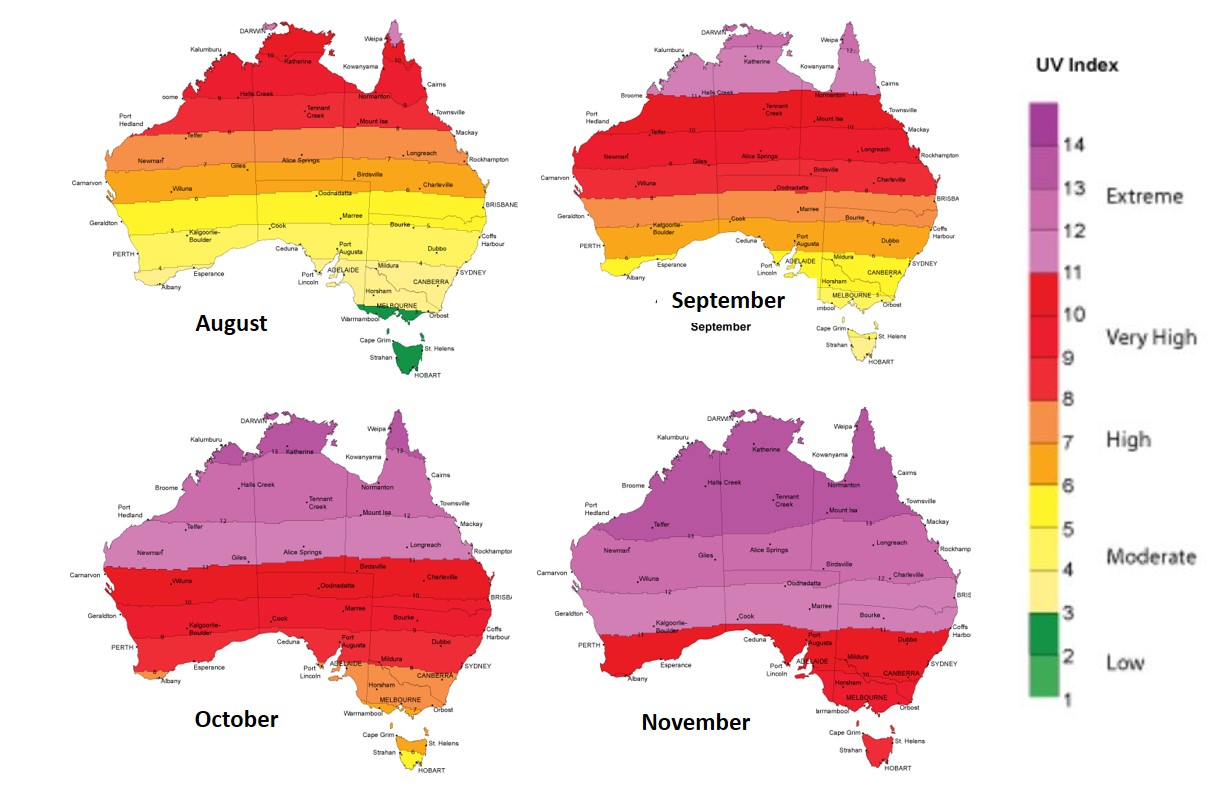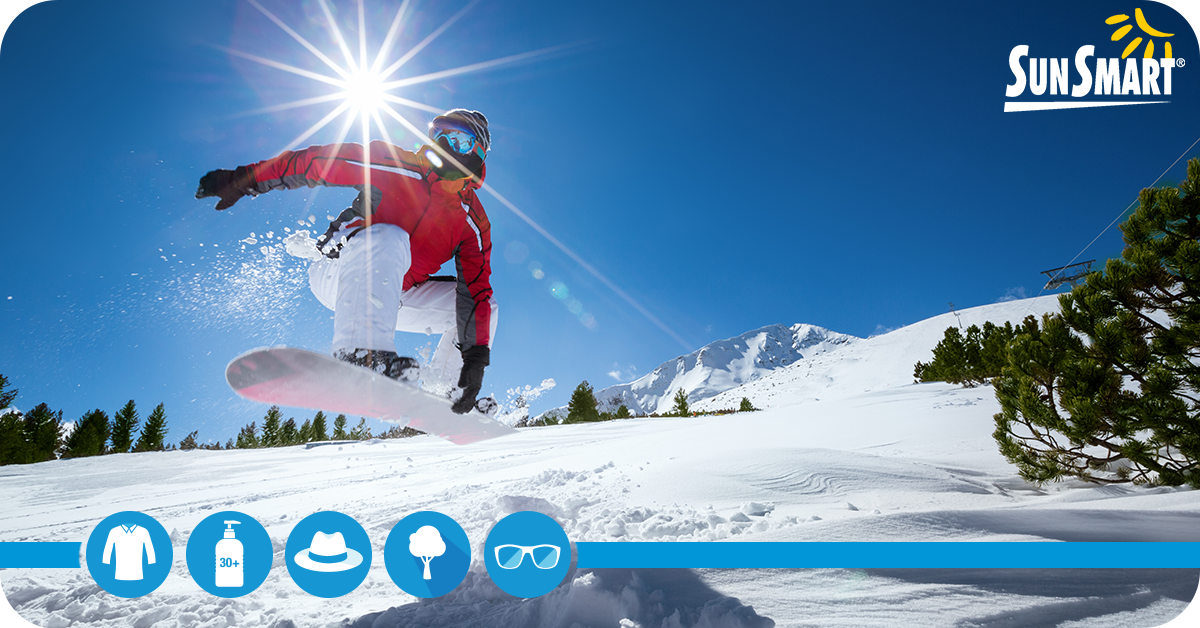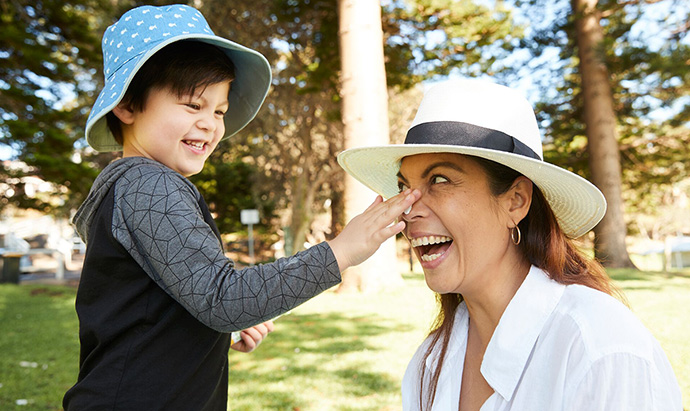Not just sunburn: there's more to UV than meets the eye
18 September 2018
Australia has one of the highest levels of ultraviolet (UV) radiation in the world, so we all need to understand how to avoid exposure and what it means for our health. And for a major hazard, UV has some surprises up its sleeve. Along with sunburn, it can cause eye damage and premature ageing—and not just in summer either. Here’s what you need to know to reduce your risk.
More than just a summertime concern
When we think of UV, we often think of long, hot summer days. However, even though UV levels are higher in summer, sun protection such as hats and sunglasses aren't just summertime accessories. Regardless of the time of year, it's important to check the UV index forecasts and use sun protection when the UV index is 3 and above. Consider how much time you’re spending outside—including during activities like skiing—any extended periods outdoors increase your need for sun protection.
UV levels change rapidly in spring
UV levels change quickly from day-to-day in spring—which can catch you out. Unlike the sun's light or heat, you can't see or feel UV radiation, so you won’t notice the damage until it has been done. While the weather may still be cool in spring, the risk of UV damage increases more than the temperature change might indicate.

Image: Average UV index for noon under clear-sky conditions August–November. The more orange, red or purple there is, the more damaging UV there will be.
There's no UV 'off season' for most of Australia
People in many parts of Australia require sun protection all year round. The closer to the equator you are, the higher the UV radiation level. Of Australian capital cities, only Hobart and Melbourne have average maximum UV levels that stay lower than 3 during winter months (June–August). People in Darwin and Brisbane need sun protection throughout the year.
UV is higher in the mountains and when reflected off snow
Despite the cooler temperatures, UV can actually be more dangerous for visitors to alpine regions. More UV reaches the earth's surface in alpine regions than at sea level because the atmosphere is thinner the higher up you are. Snow is also highly reflective, more so than water.
Read more about sun protection at the snow.

Image credit: SunSmart
From premature ageing to skin cancer
Too much UV to the skin in a short period can cause painful sunburn, and numerous sunburns cause lasting damage to the skin. People exposed to UV without any protection over many years suffer irreparable damage. This comes in the form of premature ageing, eye damage, skin damage and in the worst case, skin cancer.
Premature ageing
The first sign of skin damage from UV is premature skin ageing in people under 50. Sun-exposed skin especially on the face, forearms and backs of the hands, becomes wrinkled and dry, often with brown spots and on the face, small visible blood vessels. These changes result from UV destroying the elasticity that gives skin its youthful appearance. You can tell the amount of UV damage to exposed skin simply by comparing its appearance and texture with skin that doesn’t see the sun.
Eye damage
It’s not just your skin that suffers. UV also harms our eyes when they are unprotected from the sun for many years. It causes growth of tissue and blood vessels in the inner corners of the eyes (called 'pterygium') and cataracts in the lens of the eye.
Skin cancer
Severe UV damage to skin cells results in red, scaly skin lesions (sometimes known as 'sunspots'). In time, skin cancers may develop from the damaged cells. In fact, skin cancers are by far the most common cancers in Australia. Your face is most often affected, and the scalp, if unprotected by hair or a hat, is also very prone to UV damage and skin lesions.
There are several types of skin cancers, which vary in severity. Melanoma is a less common form of cancer that arises in the skin’s pigment cells. It is the most dangerous skin cancer and looks like a brown or black mole that is changing in size or colour, though very occasionally a melanoma may appear red or pink. Australia and New Zealand have the highest melanoma rates in the world. Melanoma is preventable by protecting the skin from UV, starting in childhood.

Image: Good sun protection habits are important from an early age. Credit: Cancer Council Australia
How to reduce your risk
To decrease the risk of sunburn, skin and eye damage, premature ageing and skin cancer:
- avoid direct sun in the middle part of the day and when the UV index is 3 and above:
- wear a broad-brimmed hat;
- wear sunglasses (especially the wrap-around kind);
- minimise your uncovered skin by wearing clothing; and
- where your skin is uncovered, apply broad-spectrum SPF 30+ sunscreen.
Also consider having your GP or dermatologist check your skin regularly for potential skin cancer in areas it’s hard to spot yourself.
Outsmarting UV: top tips
- Think UV, not heat! The sun can still be damaging on cool or cloudy days, and during the morning or early evening. UV radiation is not just a summertime concern.
- Watch for sun protection times and UV levels for your location in our online weather forecasts, BOM Weather App and the SunSmart App.
- Sun protection is recommended when the UV index is 3 and above.
More information
- Map and text forecasts of UV for Australia and its coastal waters.
- Real-time UV readings from the Australian Radiation Protection and Nuclear Safety Agency (ARPANSA).
- SunSmart advice on sun protection.
- Five sun safety tips
Acknowledgement
We’d like to acknowledge the kind assistance of Professor Adèle Green in preparing this article. Adèle is a Senior Scientist and Head of Cancer and Population Studies Group at the QIMR Berghofer Institute of Medical Research. She has a major research interest in the prevention of melanoma and other skin cancers.

Subscribe to this blog to receive an email alert when new articles are published.


Comment. Tell us what you think of this article.
Share. Tell others.